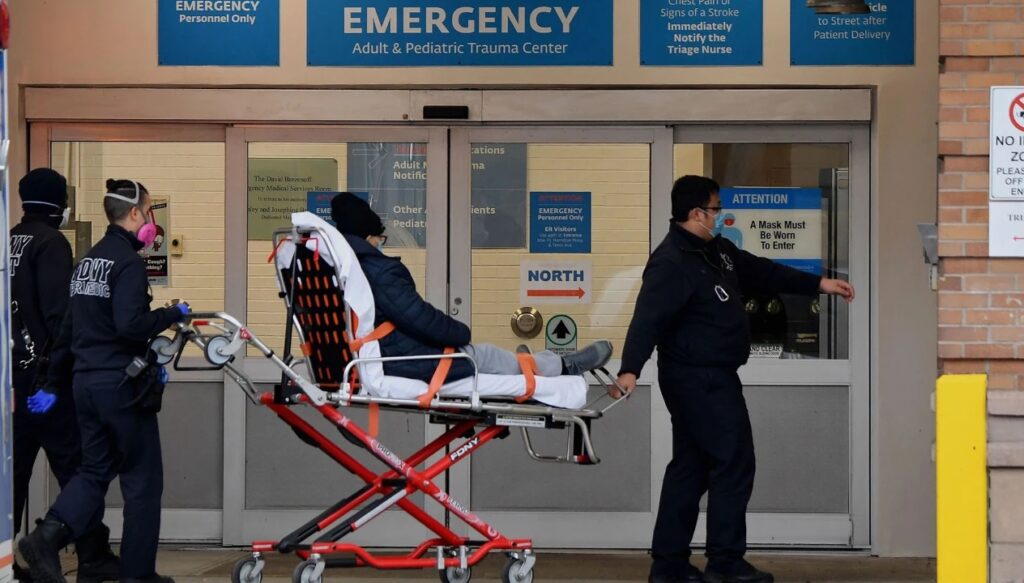Washington, which has entered the period of power transfer, is very unstable, and the mysterious political struggle is getting higher and higher.
At the beginning of the new year, some supporters of American leaders stormed Capitol Hill and tried to change the election results, triggering a political storm that shocked the United States.
Next, driven by the Democratic Party, the U.S. House of Representatives launched a second impeachment of the current leader on the 13th on the grounds of “sedition”.
Many analysts believe that this is not only “responsing responsibility” for its incitement to riots, but also a “political liquidation” to cut off the possibility of its future comeback.
Behind the scenes of political farce is the concentrated outbreak of deep contradictions in American society, and it is also the escalation of fierce struggles mixed with personal feuds and partisanships.
In Washington today, political polarization has reached an unprecedented level. As Martin Jacques, a senior researcher at the University of Cambridge, said, “The United States is now a country with serious polarization.
Republicans and Democrats are no longer in dialogue on the same channel. The result of the two sides occupying different worlds is the increasing paralysis of government.
Indeed, political polarization is a distinctive feature of the American political ecology. The two parties in the United States put partisan interests above the interests of the country and the people, and the struggle with each other intensified.
For example, at the beginning of the U.S. leadership, they regarded important political heritage such as the health insurance bill left by their predecessors as “thorns in their side”, and a series of overturned measures triggered a rapid turn in policy at home and outside the United States.
In addition, the two parties are tit-for-tat on whether to build the wall to deal with illegal immigrants, so the federal government has “stop” several times.
Even in the face of the severe impact of the COVID-19 epidemic, the two parties still dismantled each other, and the political chaos continued unabated. Partisan stereotypes hinder the equitable distribution of anti-epidemic materials among the states of the United States.
The national relief bill has been difficult to produce for a long time due to bargaining. The lack of coordinated policies has cost the United States to pay the tragic price of more than 23 million infections and more than 380,000 deaths so far.

The unprecedented sharp partisanship has fully exposed the deep color of “fighting for fighting” in the American democracy. Under the threat of power game thinking, the elites of the two parties do not act on the merits, but attack on the basis of partisan interests.
Last February, the scene of Speaker Pelosi’s speech tore the State of the Union address of American leaders in full view of the public showed the deep political gap between the two parties to the world.
Frozen three feet is not a day’s cold. In fact, the party power struggle has a long history in American politics. One of the original intentions of the United States to establish a political system of separation of powers is to realize the mutual restriction of executive and legislative powers.
In the real political operation, it is difficult for the presidential power and the dominance of both the Senate and the House of Representatives to be controlled by one party at the same time.
This makes it not easy for the president to promote major national policies and legislation, regardless of the camp from. Because both parties aim to pursue ruling power, “live or die” has become the norm, which either makes it difficult to reach consensus on key policies or leads to the easily overturn of policy decisions formed by compromise.
This is also one of the root causes of many social contradictions in the United States that cannot be resolved for a long time.
On the other hand, the social structure of the United States is undergoing great changes, and the benefits of social classes are unevenly distributed. Due to their own situation, different groups are dissatisfied with the policies of the United States.
In order to consolidate the “basic disk”, the policies of the two parties in the United States on social welfare, equity, immigration and other issues have different starting points, which are bound to be inconcilable ant at the level of national governance, and ultimately harm the interests of the general public in the United States.
It can be seen that the increasing political polarization of the United States is not only the embodiment of the chronic disease of the political system, but also the product of the escalation of the social contradiction crisis.
This phenomenon will never end with the change of leadership in the White House. On the contrary, a new round of struggle is brewing.
It has been noted that despite the defeat of the election, the current leader of the United States still received more than 74 million popular votes, the second highest in history.
This shows that the social public opinion base behind it is still very strong, and the risk of political opposition intensifying social violence is gathering and potentially spilling out.
Recently, the Eurasian Group, a US political risk consulting agency, ranked “American political division” as the top ten risks in the world in 2021.
Illness comes like a mountain, and illness goes like a silk drawing.
If the crisis hidden in the depths of American politics and society cannot be solved, any heroic words about leading the United States to achieve “unity” may be passive water.
And the escalating party power struggle can only consume the vitality of the United States in the end.



